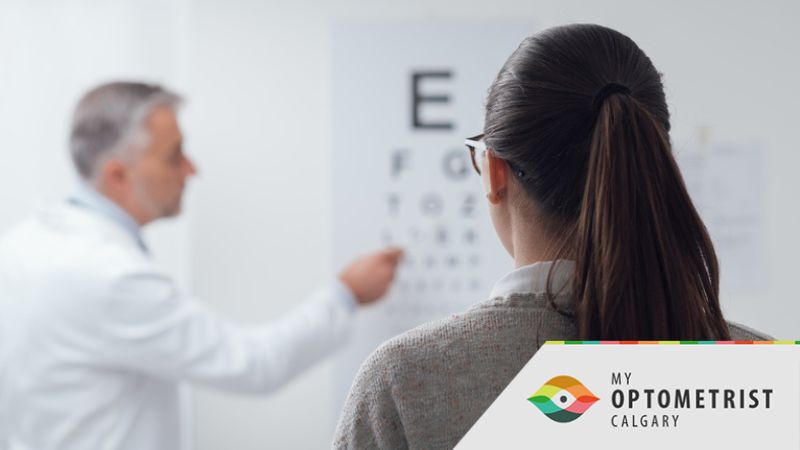
Your eyes are an important and complex part of your body and your vision greatly contributes to your quality of life. Make sure you care for your eyes by visiting your optometrist for regular comprehensive eye exams. When you go for an eye exam, your optometrist will use several different tools and specialized equipment. Each of these performs a specific function to help measure your vision or to monitor your eye health. Here are some types of optometry equipment your eye doctor will use during an eye exam and why they are so important.
Eye Exam Equipment
Autorefractor
This machine provides a measurement of a person’s vision. If a person has a refractive error, an autorefractor is used to help determine the prescription of their eyeglasses or contact lenses. An autorefractor uses a sensor that detects the reflections of light off the cones in the eyes so that the machine can measure where light focuses on the retina.
Tonometer
This device measures the pressure within the eye by either blowing a small puff of air (a non contact tonometer test) or by using an instrument to very gently apply pressure to the surface of your eye (a contact tonometer test). These tests are administered to check for glaucoma, as one of the major indications of glaucoma development is increased pressure within the eye.
Retinal Camera
As the name implies, this is a camera used to take photos of the retina. Retinal cameras use a low-focus microscope with a camera to take detailed, 3D images of the back of the eye, including the retina, the optic disk, and the macula. The images from a retinal camera allow your optometrist to view small details such as blood vessel health to monitor for developing eye conditions such as age-related macular degeneration or diabetic retinopathy.
Visual Field Test
This test measures your peripheral vision. During an eye exam, you will be asked to look into a device and click a button whenever you see motion. The device will randomly show simple images (such as squares or lines) in various parts of your peripheral vision. This test is very important as one of the symptoms of glaucoma development is a loss of peripheral vision.
Phoropter
This is the classic optometrist device most people think of when they think of an eye exam. The phoropter is a large device with many different lenses. It rests gently against your nose as your optometrist changes the combination of lenses and you tell the optometrist if the lens makes your vision better, worse, or approximately the same as before. This device is used to manually determine your refraction.
Snellen Chart
A Snellen chart is the chart you read to determine the accuracy of your distance vision. The top line will contain large, randomized letters and each consecutive line below will have increasingly smaller letters. The Snellen chart may be used in conjunction with the phoropter to measure your vision and help your optometrist determine your prescription if needed.
Slit Lamp
This microscope gets its name from the slit light source attached to it. A slit lamp is used to examine various parts of the eye near the surface, such as the iris, cornea, lens, and even the eyelid. A slit lamp can also be used to view the back of the eye, although your optometrist may need to dilate your pupils for this, so your optometrist has greater room for viewing.
Retinoscope
A retinoscope shines light into the eye so that your optometrist can see the light reflect off of your retina. A retinoscopy is performed during an eye exam to see how light reflects off your eye as well as how well your eyes can focus and work together.
Comprehensive Eye Exams With A Calgary Optometrist
Whether or not you wear glasses, everyone should receive regular comprehensive eye exams. If you are 65 and over, it is recommended to receive an eye exam every year. If you are between 19 and 64, you should receive an eye exam at least every 2 years. Children 18 and under should be taken for a children’s eye exam once a year. Regular eye exams from an experienced Calgary eye doctor do more than update your prescription, they allow your optometrist to monitor your eye health. Protect your vision and eye health with an eye exam from My Optometrist in Calgary. To book an eye exam with one of our eye doctors, contact My Optometrist at one of our three locations at Health First in SE Calgary, Sunridge in NE Calgary, or Three Hills, AB. You can also call us or fill out the online contact form.
FAQ
Q: My vision is fine and I’m still pretty young. Do I really need eye exams?
A: Yes. While it is more common for eye conditions to develop later in life, they can happen to any person of any age and could cause irreversible vision loss. Eye exams also can detect other health issues that are not specific to the eyes. Read 10 Surprising Things An Eye Exam Can Uncover to learn more.
Q: Do comprehensive eye exams hurt?
A: No, they do not. The tests that are conducted are non-intrusive and will not cause any pain. If for some reason you experience any pain or discomfort during the exam, let your optometrist know right away.
Q: Is there a difference between a vision test and an eye exam?
A: Yes. A vision test can be done by a trained screener and does not require an optometrist or ophthalmologist to conduct the test. Vision tests only determine what prescription you may need for lenses and do not look at any other aspects of your eye health. A comprehensive eye exam can only be performed by an optometrist or ophthalmologist and evaluates both the internal and external parts of the eye to detect common eye diseases like glaucoma.